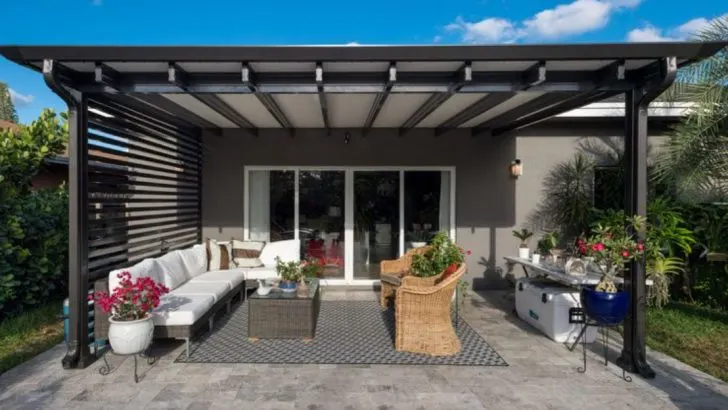When designing your outdoor living space, understanding the difference between a patio and a porch is essential. Both serve as extensions of your home, but their design, placement, and purpose can vary greatly. Whether you’re building from scratch or simply looking to enhance your existing space, knowing the distinctions can help you choose the right feature for your needs.
Patios are typically located at ground level and are designed for outdoor relaxation or entertainment, often built in the backyard. They may or may not have a roof, and they’re generally used for things like grilling, dining, or lounging. Porches, on the other hand, are usually attached to the front of the house, raised slightly off the ground, and typically covered with a roof, providing shelter for the entrance to the home.
In this article, we’ll dive deep into 18 key differences between patios and porches, from construction style and placement to materials used and the overall vibe they provide to your home. Knowing these nuances will help you make the best decision for your outdoor space’s functionality and aesthetic.
Construction Materials
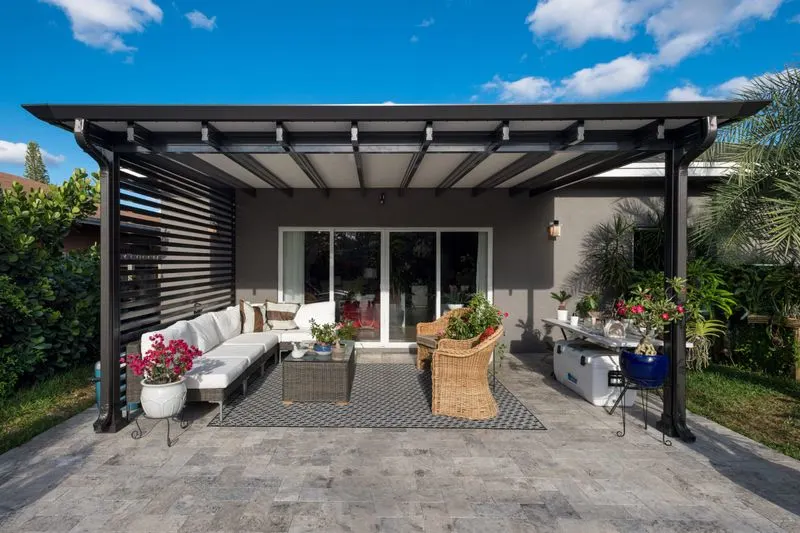
Patios and porches often use different materials, influencing their aesthetics and durability. While patios frequently incorporate stone, concrete, or pavers, porches are typically crafted from wood or composite materials. A patio’s material choice reflects its design purpose, often blending with the garden or outdoor area. On the other hand, porches, being connected to the house, prioritize complementing the home’s architecture. The material selection can affect maintenance needs and longevity, so it’s essential to consider these aspects. Not only does this choice impact the appearance, but it also plays a role in the construction cost.
Location Relative to Home
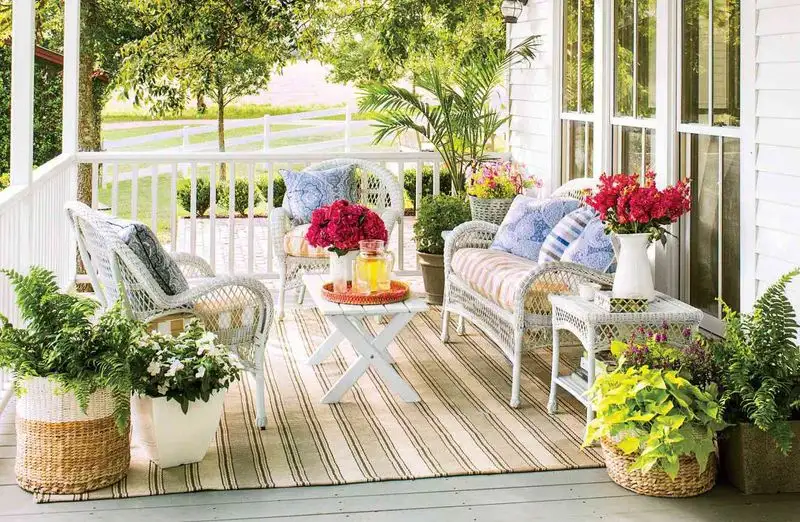
Porches are generally attached to the front of the house, offering a welcoming entrance, whereas patios are often located at the back, serving as an extension of the living space. This placement distinction affects how each space is used and perceived. Porches are designed for greeting guests and provide a transitional space from the outside to indoors. Patios, however, are more secluded, often utilized for private relaxation and entertainment. Understanding these location dynamics is crucial in planning your outdoor space to align with your home’s flow and your lifestyle.
Roof Presence
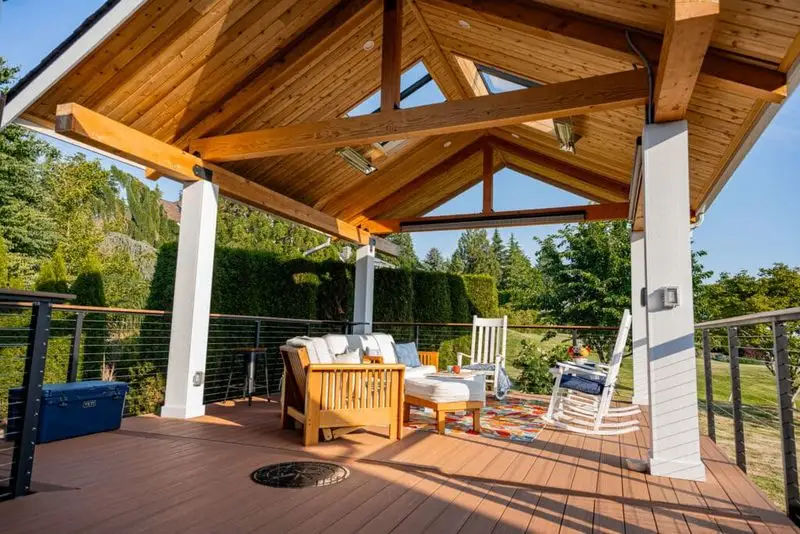
A defining feature is that porches typically include a roof, offering shelter from the elements, while patios are usually uncovered, exposing them to the sky. This difference impacts their usability during various weather conditions. Porches provide a shaded, protected area that can be enjoyed rain or shine, making them a versatile option for all seasons. Patios, lacking this overhead coverage, are more at the mercy of the weather but offer unobstructed views of the sky, ideal for sunbathing or stargazing.
Foundation Requirements
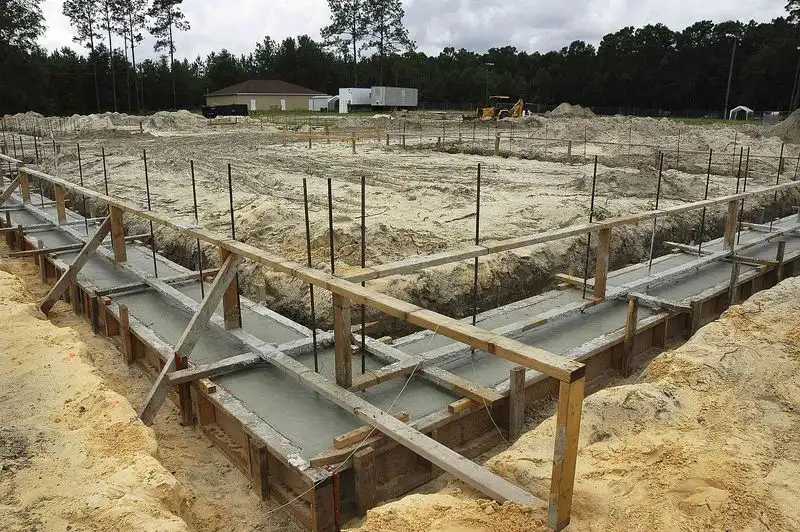
The foundation is another area where patios and porches diverge significantly. Porches typically require a more substantial foundation, often involving deeper footings and structural elements to support the weight of the roof and any enclosed walls. Patios, in contrast, generally rest on a more straightforward base of compacted soil and sand or gravel, possibly with a concrete slab. This difference not only affects the complexity and cost of construction but also influences the choice between a temporary or permanent structure.
Enclosure Possibilities
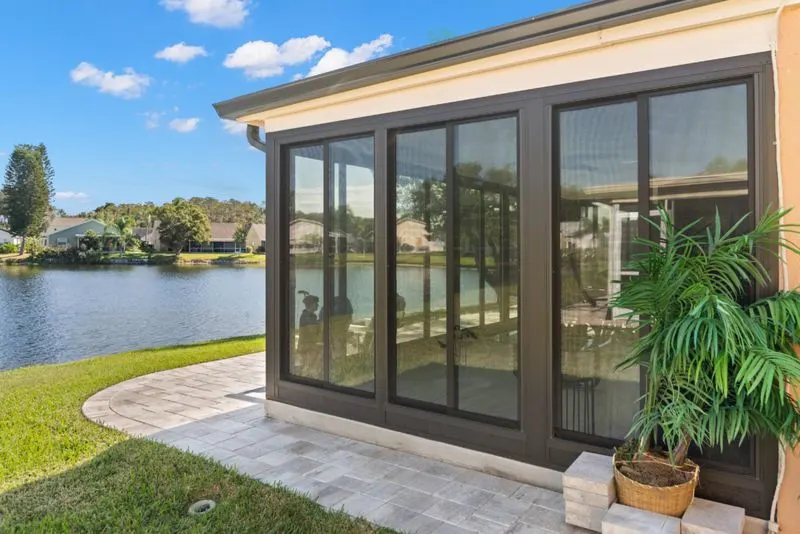
Porches offer more flexibility when it comes to enclosures, often featuring screens or glass to create sunrooms or three-season rooms. This adaptability makes porches suitable for diverse weather conditions while offering protection from insects and debris. Patios, however, are typically open-air, focusing on connecting the user with the surrounding landscape. Enclosure possibilities can transform a porch into an extension of the living area, whereas patios emphasize an outdoor experience with fewer barriers between you and nature.
Design Flexibility

When it comes to design, patios offer an expansive range of possibilities due to fewer architectural constraints compared to porches. The design of a patio can vary widely, from rustic and natural to sleek and modern, matching the landscape’s aesthetic. Porches, being part of the house structure, often adhere to the architectural style of the home. This limitation can restrict creative freedom but ensures harmony with the existing building. The choice between a patio and porch can hinge on how much design flexibility you desire.
Purpose and Use
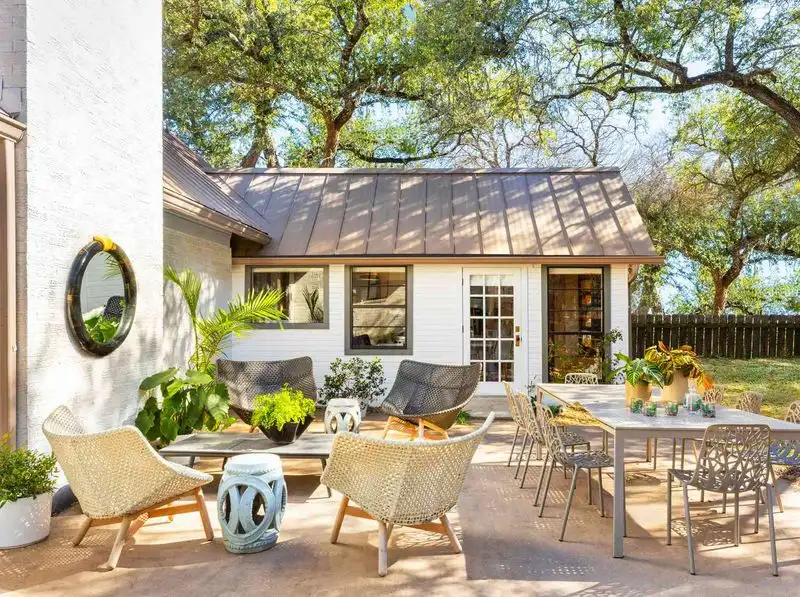
The intended purpose greatly influences whether a homeowner might choose a patio or porch. Patios are primarily designed for outdoor dining, entertaining, and enjoying open-air activities. In contrast, porches are more about relaxation, providing a cozy spot to enjoy a book or chat with neighbors. This difference stems from their structural and locational traits, with patios offering expansive space for larger gatherings, while porches provide a more intimate setting. Understanding these uses helps in planning the right space for your lifestyle needs.
Privacy Levels
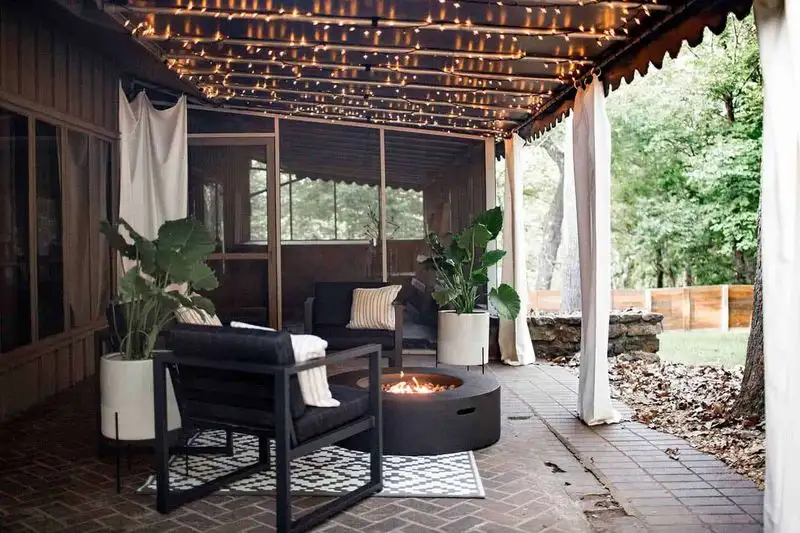
Privacy is a key consideration when choosing between a patio and a porch. Patios, often situated in the backyard, provide a secluded area shielded from public view, ideal for private gatherings. Conversely, porches are typically located at the front of the house, more exposed to passersby and neighbors, which can limit privacy but enhance community interaction. Deciding between the two depends on your preference for social engagement versus personal retreat. This consideration can guide homeowners in designing their outdoor spaces to match their desired level of interaction with the outside world.
Maintenance Needs

Maintenance is a crucial factor that differentiates patios from porches. Patios, made of durable materials like stone or concrete, generally require less frequent upkeep but may need periodic cleaning to remove moss or stains. In contrast, porches often involve more maintenance, especially if made of wood, requiring regular painting or sealing to protect against weathering. Understanding these needs helps homeowners plan their time and resources effectively, keeping these outdoor areas in pristine condition throughout the year.
Cost Implications
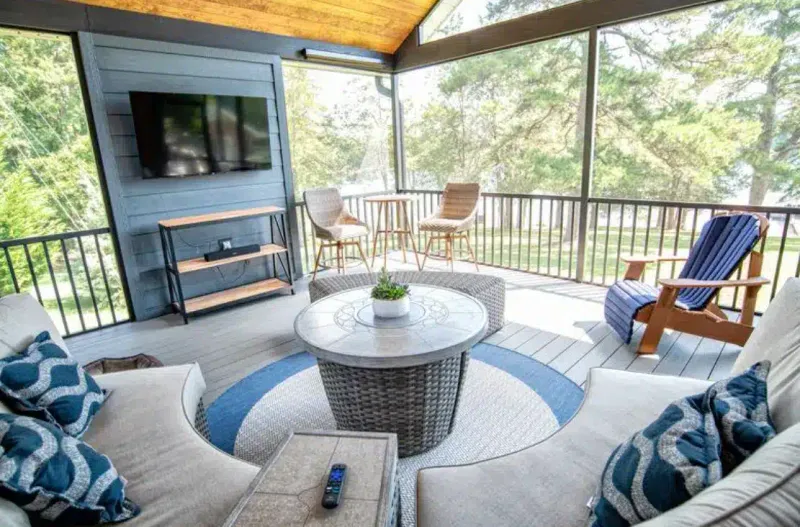
The cost of constructing patios versus porches can vary widely based on materials, size, and design complexity. Generally, porches tend to be more expensive due to structural elements like roofing and foundations, plus the potential for enclosures. Patios, being simpler in design, are often more budget-friendly. Understanding the cost implications helps in deciding which option aligns with your financial plan and lifestyle aspirations. This consideration is crucial for homeowners looking to maximize their investment while enhancing their outdoor living experience.
Seasonal Usability
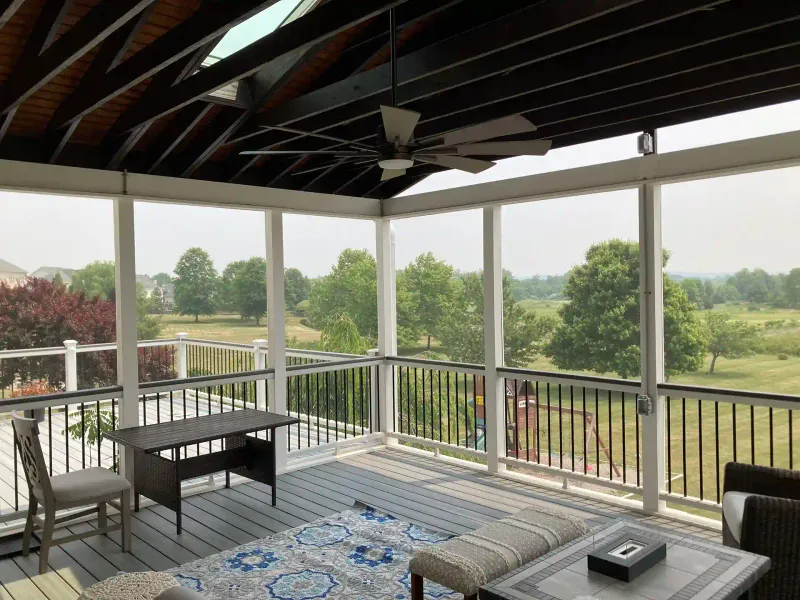
Seasonal usability is a notable difference between patios and porches. Porches, often equipped with roofs and enclosures, can be enjoyed year-round with appropriate heating or cooling solutions. Patios, exposed to the elements, are more suited to fair-weather use unless enhanced with features like pergolas or outdoor heaters. This distinction means porches may offer more consistent utility throughout the seasons, while patios provide an immersive outdoor experience during suitable weather. Homeowners should consider their climatic conditions and usage patterns when choosing between these spaces.
Integration with Landscaping
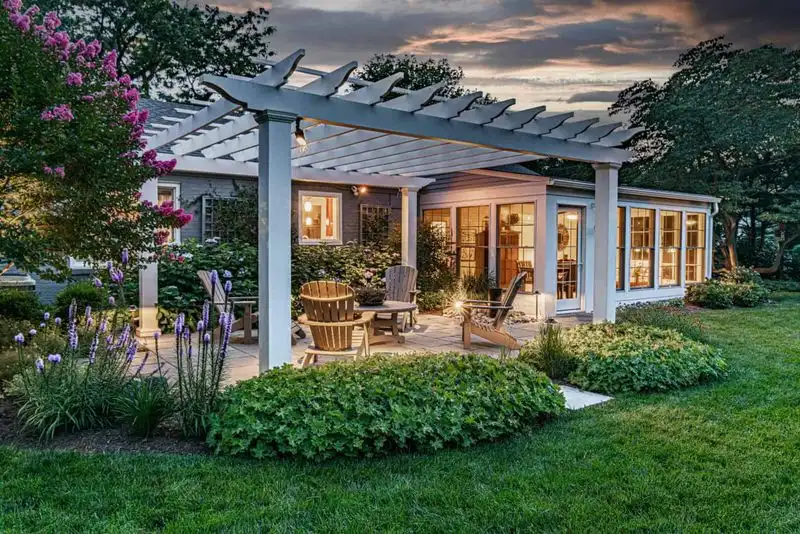
Patios tend to blend more seamlessly with the surrounding landscape, acting as a transition between the house and garden. This integration allows for creative landscaping, including gardens, water features, or outdoor kitchens. Porches, usually constructed as part of the home, may not offer the same level of integration with natural elements but can be adorned with potted plants or decorative features. This difference can influence how a homeowner chooses to enhance their outdoor environment, either through natural integration or architectural accentuation.
Weather Resistance
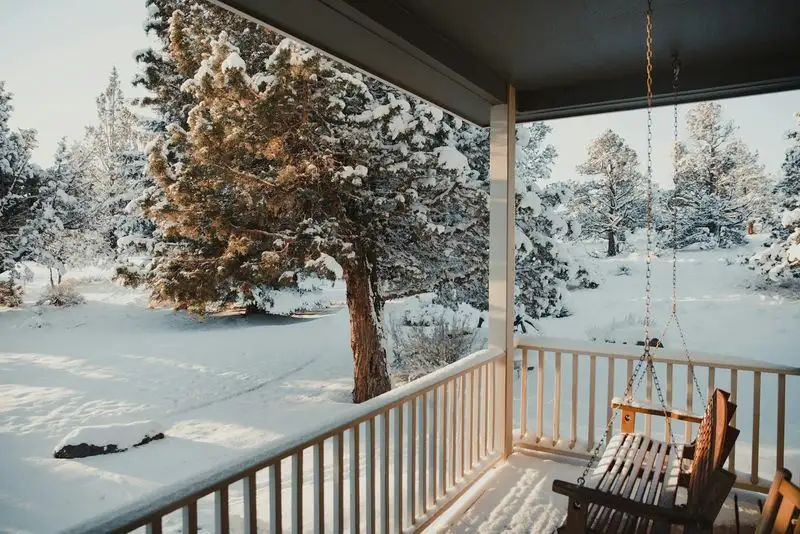
Porches provide superior weather resistance due to their covered design, protecting users and the structure itself from rain, sun, and wind. This makes porches a reliable choice for those living in regions with unpredictable weather patterns. Patios, being open-air, are more vulnerable to the elements, potentially limiting their use during adverse weather conditions. Enhancements like awnings can mitigate some of these effects, but the inherent design exposes them to wear and weather. Homeowners must consider local weather when planning their outdoor spaces to ensure optimal usability and longevity.
Furniture and Decor Options

The furniture and decor options for patios and porches can differ significantly due to their structural characteristics. Patios, open to the elements, often feature weather-resistant furniture and robust decor that can withstand exposure. Porches, with their sheltered environment, allow for a wider range of furnishings, including more delicate pieces and textiles. This flexibility enables homeowners to personalize their space more freely, depending on the location. Understanding these differences helps in selecting the right furnishings to create a comfortable and stylish outdoor retreat.
Historical and Cultural Significance
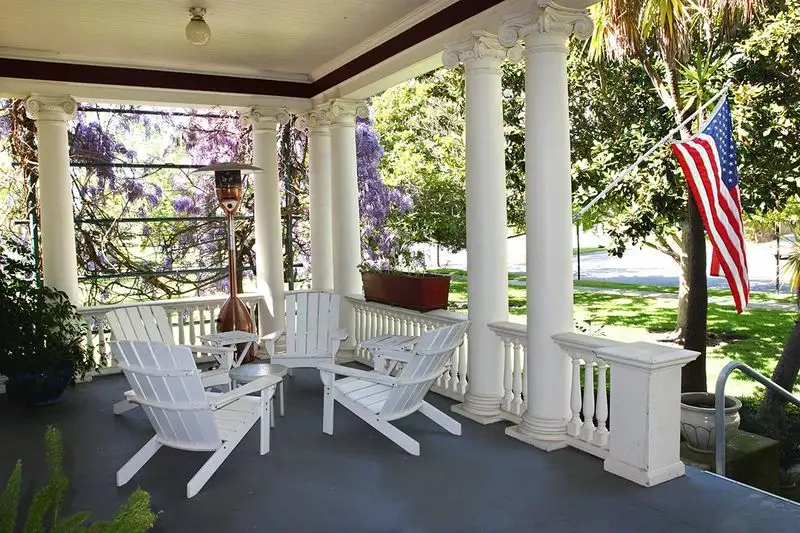
Porches have a rich history and cultural significance, often associated with Southern architecture in the United States, serving as a communal meeting space. Patios, rooted in Spanish influence, are celebrated for their role in creating relaxed, informal outdoor environments. This historical context can inspire design choices, shaping how homeowners perceive and use these spaces. Understanding the cultural backgrounds of patios and porches adds depth to their appreciation, allowing for a more informed decision in how they are integrated into modern homes.
Permitting and Regulations
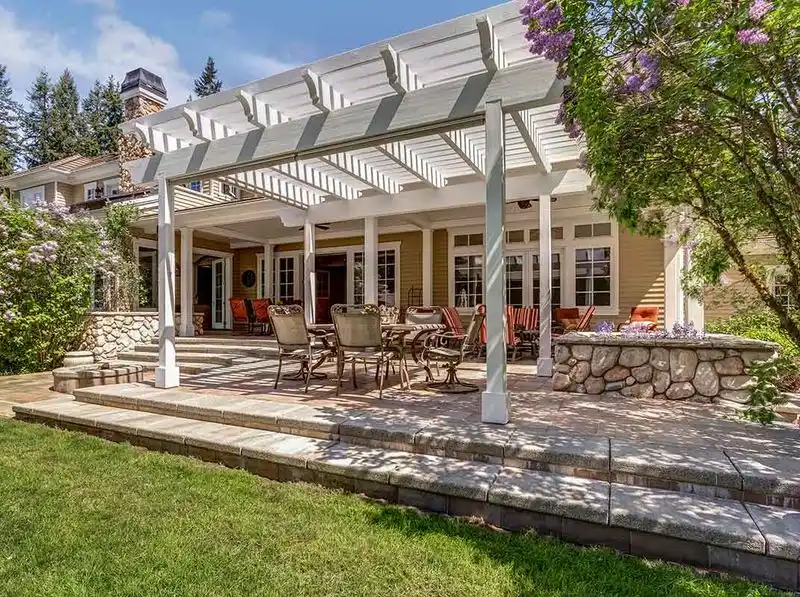
Building patios and porches may involve different permitting processes and regulations. Porches, being part of the home’s structure, often require more stringent permits and adherence to building codes. Patios, considered less permanent, may not require as extensive approval processes, depending on your location. Understanding these legal differences is essential for planning and executing a project smoothly, ensuring compliance with local laws and regulations. This knowledge helps homeowners navigate the bureaucratic landscape, minimizing potential setbacks and ensuring their outdoor spaces are constructed legally.
Impact on Property Value
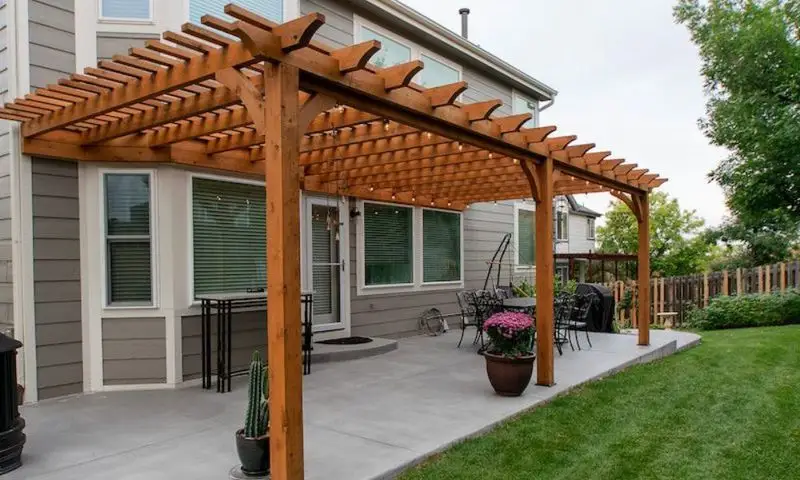
Adding a patio or porch can enhance a home’s property value, but their impacts may differ. Porches often increase curb appeal, creating a welcoming entrance that can be attractive to potential buyers. Patios, enhancing backyard living space, can appeal to those seeking outdoor entertainment areas. The choice between them depends on market trends and buyer preferences in your area. Consulting with real estate professionals can provide insights into which option might offer the best return on investment, aligning with your financial and lifestyle goals.
Sound Dynamics
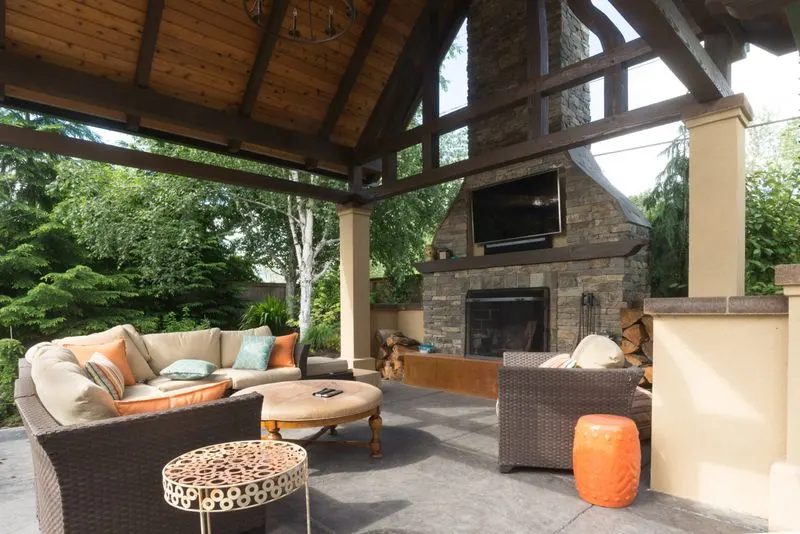
Porches, often enclosed or semi-enclosed, can create a more intimate acoustic environment, buffering external noises and enhancing indoor-to-outdoor sound flow. Patios, open to the surroundings, allow for natural sounds from the environment to blend seamlessly, which can be soothing or distracting. This difference in sound dynamics can influence how the space is used, whether for quiet relaxation or lively gatherings. Understanding these acoustical properties aids homeowners in planning activities suited to each space’s unique auditory characteristics.

